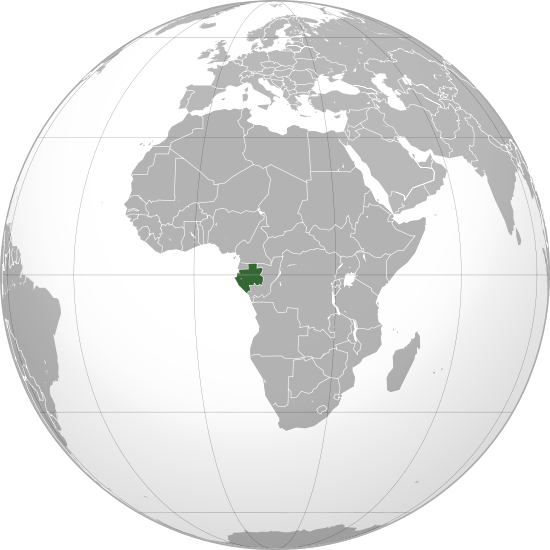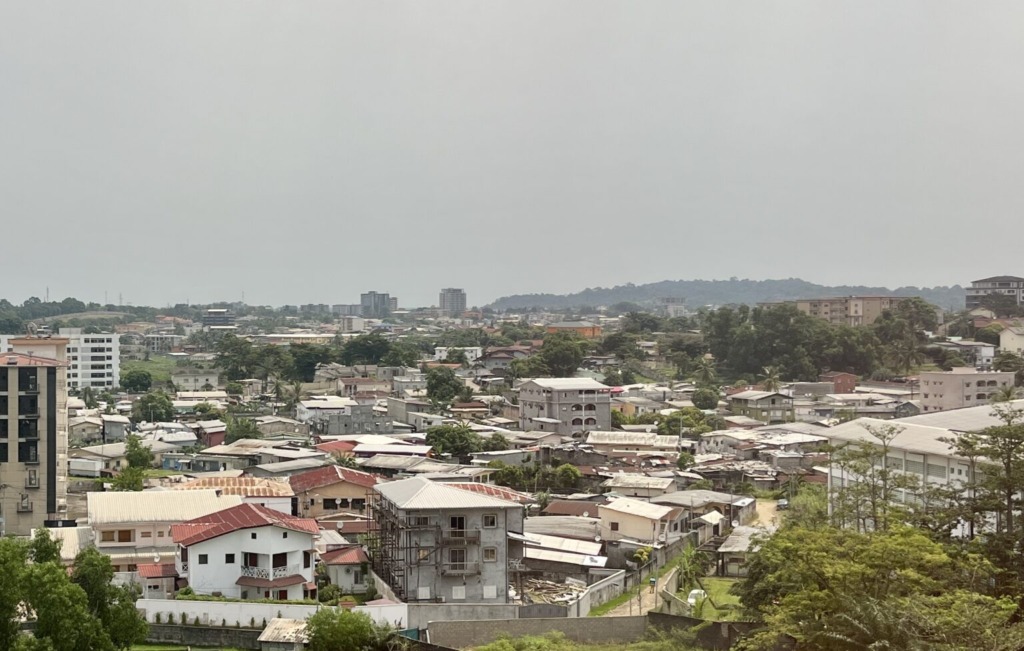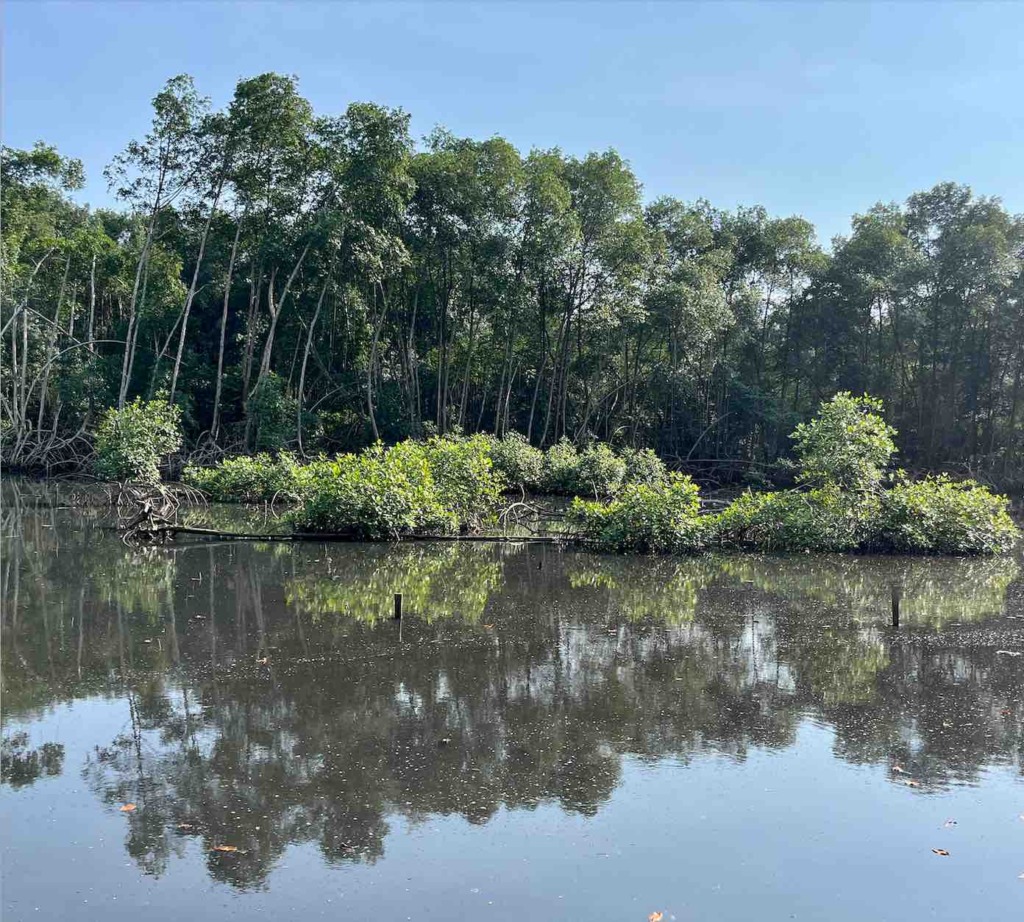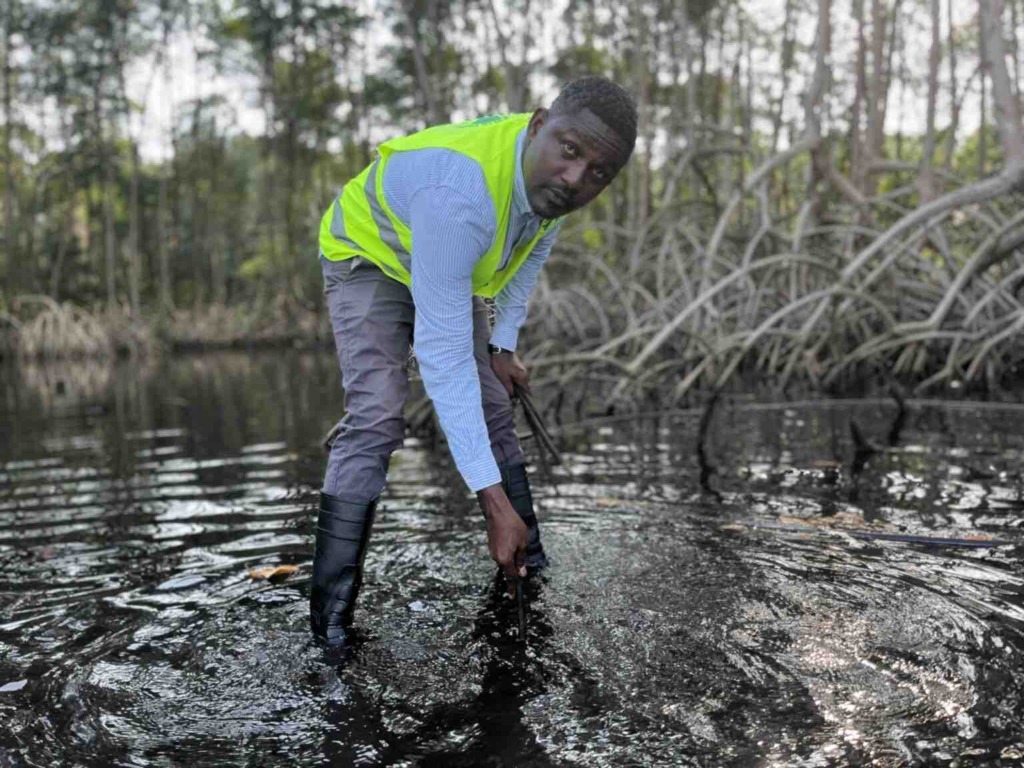Gabon is a country on the west coast of Africa

MSClaudiu, Public domain, via Wikimedia Commons

Mysid, CC BY-SA 4.0, via Wikimedia Commons
The capital city of Gabon is Libreville, and it sits on the coast. One third of people in Gabon live in Libreville. Parts of Libreville are built in and around mangrove forests.

What is a mangrove forest?
Mangrove forests are a unique ecosystem at the boundary between land and sea in tropical and subtropical areas. Mangrove trees have special stilt roots that can grow in soil with a high amounts of salt.

Mangroves help prevent floods
Gabon’s mangrove forests help prevent flooding of land areas around them. The thick tangle of mangrove roots acts as a barrier to floodwaters.
Mangrove root systems also serve as an important nursery for many fish and invertebrate species. And Mangroves store carbon.
With a large and growing human population, there is a great deal of construction happening in Libreville. Much of this construction is unplanned and happens in areas of mangrove forest. When mangroves are cleared and the roots removed, it increases the chance that those areas might get flooded.
In 2021, Gabon’s space research agency, AGEOS, concluded that Libreville had lost nearly 70 hectares (170 acres) of mangroves in three years. This is a loss of about 3.5% of Libreville’s mangroves.

Meet one group working to protect Libreville’s mangroves
On the ground, some groups are trying to save the mangroves. Guilann Ibinga is the director of a group called Friends of Lowé. The Lowé mangrove in Libreville is where deforestation of mangroves is most intense.
Guilann Ibinga pulls on his rubber boots as he prepares to go to the Lowé mangrove to plant new trees. To get there, he crosses what looks like a football field with loose soil and passes several houses on stilts. He finally reaches shallow water from which tall trees with visible, intertwined roots spring up.
“We plant mangroves thanks to their fruits that we harvest directly from the tree, the propagules, and then we plant them in water,” says Ibinga.

When Ibinga moved into the Lowé area in 2018, it looked completely different. “There was a whole village of fishermen here, about 1,000 people, and then there was a sawmill over there,” he recalls.
Everything had been built without permission, and mangroves had been cleared. City authorities evicted the fishing community, and since then Friends of Lowé has worked on its own to ensure they don’t return, Ibinga says.
Guilann Ibinga’s organization is helping raising awareness among youth about the importance of preserving the mangroves.







